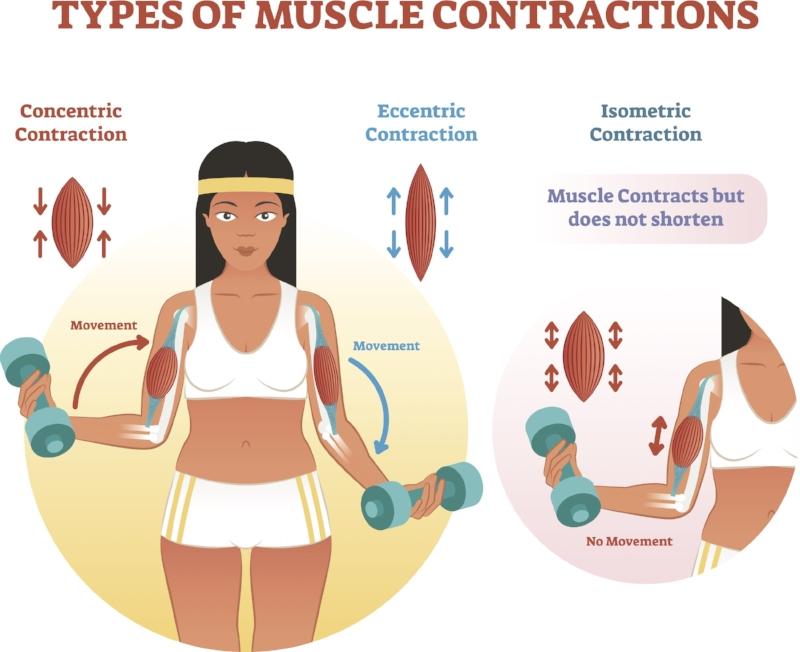In the world of fitness and strength training, the journey to peak performance is often paved with an array of techniques and philosophies, each promising to unlock the body’s fullest potential. Among these, the debate between eccentric and concentric movements stands out as a focal point for both seasoned athletes and curious novices. Imagine a dancer gracefully lowering themselves from a leap, or a weightlifter controlling the descent of a barbell. These are eccentric movements—where muscles lengthen under tension. Now picture the explosive energy of a sprinter launching off the blocks, or the powerful contraction as a gymnast propels themselves into the air. These are concentric movements, characterized by muscle shortening. But which of these contrasting approaches holds the key to greater strength, enhanced muscle growth, and reduced injury risk? As we delve into the mechanics and benefits of these movements, we unravel the intricate dance of muscle fibers and explore whether the eccentric might just have an edge over its concentric counterpart.
Understanding the Science Behind Muscle Actions
When we delve into the dynamics of muscle actions, we uncover two pivotal movements: eccentric and concentric. While concentric movements involve muscle shortening as it generates force, eccentric movements occur when the muscle lengthens under tension. These actions are not merely opposite ends of a spectrum but rather unique components with distinct benefits. Eccentric movements, often overlooked, have been shown to induce greater muscle hypertrophy and strength gains due to their higher force production and ability to cause more significant micro-tears in muscle fibers. This translates to a more robust repair and growth process.
- Increased Force Production: Eccentric actions can produce up to 1.3 times more force than concentric ones.
- Enhanced Muscle Growth: The stress and damage from eccentric movements stimulate greater protein synthesis.
- Improved Muscle Control: These movements enhance proprioception and control, crucial for injury prevention.
By incorporating eccentric-focused exercises into a fitness regimen, individuals can harness these unique advantages. Whether through slowing down the lowering phase of a squat or emphasizing the descent in a bicep curl, the potential to enhance overall muscular development and functionality becomes evident. This nuanced approach challenges the traditional focus solely on concentric strength, offering a more comprehensive pathway to physical prowess.
The Role of Eccentric Movements in Strength Training
In the realm of strength training, eccentric movements often take a backseat to their more dynamic counterparts, the concentric actions. However, the benefits of focusing on eccentric exercises are becoming increasingly recognized. Eccentric movements, characterized by the lengthening of muscles under tension, offer a unique stimulus that can enhance muscle growth and strength. These movements are not only effective in improving overall muscle mass but also play a crucial role in developing tendon strength and flexibility.
- Increased Muscle Damage: Eccentric actions typically result in greater muscle fiber damage, which can lead to more significant gains during recovery.
- Enhanced Neural Adaptations: Training eccentrically helps in refining motor unit recruitment, which can improve overall strength.
- Reduced Risk of Injury: By strengthening the muscles and tendons, eccentric exercises can aid in injury prevention.
- Metabolic Efficiency: These movements can also boost metabolic efficiency, allowing for improved performance in various athletic disciplines.
While eccentric training should not entirely replace concentric exercises, incorporating them into a balanced workout regimen can lead to comprehensive strength development. The subtle yet profound impact of these movements is why they are an essential component of any effective strength training program.

Comparing Muscle Activation: Eccentric vs. Concentric
In the realm of strength training, understanding the distinction between eccentric and concentric movements is crucial for optimizing muscle growth and performance. Eccentric movements, often referred to as the “negative” phase, involve lengthening the muscle under tension, such as lowering a weight during a bicep curl. This phase is characterized by a greater potential for muscle damage and subsequent repair, which can lead to increased muscle hypertrophy over time. On the other hand, concentric movements are associated with muscle shortening, such as lifting the weight back up during the same curl. This phase primarily focuses on overcoming resistance and is essential for building strength.
When comparing muscle activation between these two types of movements, several factors come into play:
– Force Production: Eccentric movements can typically handle more load, as the muscles are stronger when lengthening. This allows for greater force production and potential muscle growth.
– Muscle Fiber Recruitment: Eccentric exercises often recruit more muscle fibers, particularly those that are less commonly activated during concentric phases.
– Metabolic Demand: Concentric actions generally require more energy, leading to a higher metabolic demand and increased calorie burn.
While both eccentric and concentric movements play vital roles in a balanced workout regimen, focusing on the eccentric phase can lead to greater gains in muscle size and strength due to the increased muscle tension and fiber recruitment. However, integrating both types of contractions is essential for achieving comprehensive fitness goals.

Maximizing Workout Efficiency with Eccentric Techniques
When it comes to building strength and enhancing workout results, eccentric movements often hold the key to unlocking greater gains. Eccentric techniques focus on the lengthening phase of a muscle contraction, such as lowering a weight slowly. This approach not only maximizes muscle tension but also encourages muscle fiber recruitment, leading to improved strength and hypertrophy. By incorporating eccentric exercises, you can experience a myriad of benefits, including:
- Increased muscle damage: Eccentric movements cause more micro-tears in muscle fibers, which can lead to greater muscle growth during recovery.
- Enhanced neural adaptations: Training eccentrically can improve motor unit recruitment, allowing for more efficient movement patterns and strength gains.
- Improved flexibility: The controlled lengthening of muscles can contribute to better flexibility and range of motion over time.
To effectively incorporate eccentric techniques into your routine, consider adjusting the tempo of your exercises. For instance, extend the lowering phase of a squat or bench press to 3-5 seconds. This deliberate slowing down challenges the muscles differently compared to traditional concentric-focused exercises. By shifting your focus to the eccentric phase, you may find your workouts become not only more challenging but also more rewarding in terms of results.
